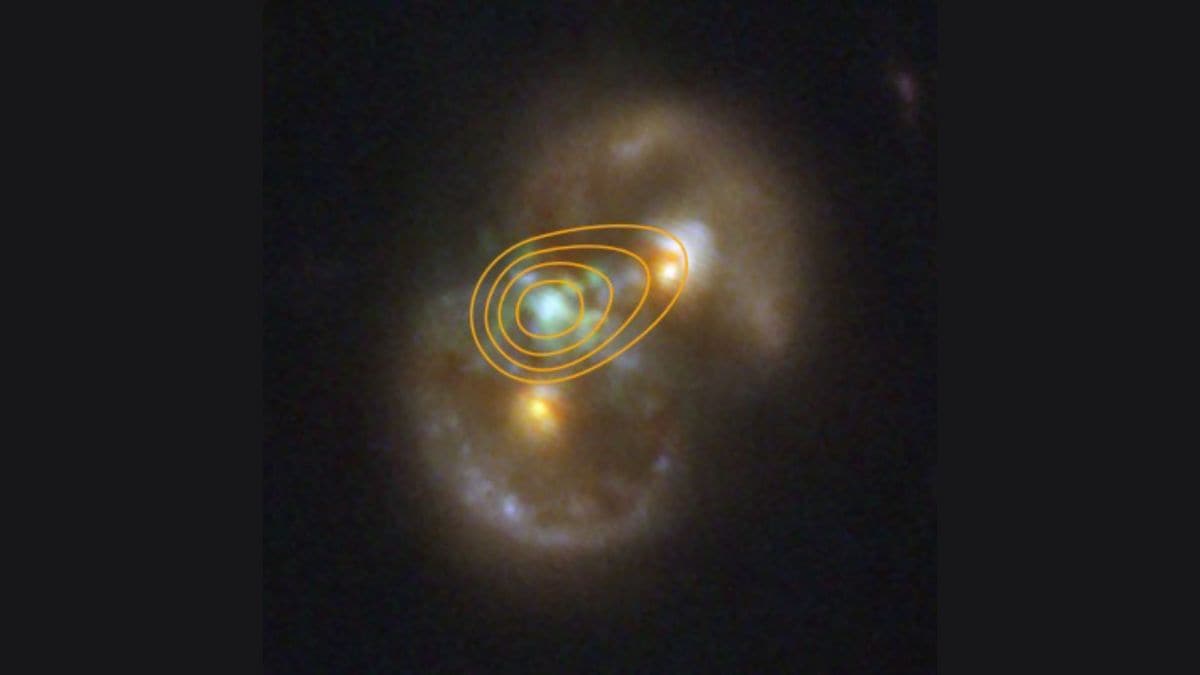

Astronomers have detected a weird black hole that is causing its galactic host to wobble like a top in the throes of “direct collapse” in the earliest phase of creation in the universe. The unique thing about this object is where it is located: between a pair of colliding galaxies, not in the nucleus of either one. That bizarre orientation suggests that instead of forming from a dying star’s wreckage, the black hole might have formed from a collapsing cloud of gas and dust — something researchers had long suspected was possible but nobody had ever seen.
JWST Uncovers Rare Black Hole Between Merging Galaxies, Backing Direct Collapse Theory
As per the Yale-led COSMOS-Web survey team, the Infinity Galaxy was created through a head-on merger of two disk galaxies. Lead researcher Pieter van Dokkum explained that the black hole’s location was the biggest surprise. Instead of being housed in either galactic nucleus, it sits between them, aligning with the velocity of the surrounding ionised hydrogen gas. The black hole is actually so strangely positioned and moving so quickly in relation to its host galaxy that it might even have been formed in its current spot, supporting the “heavy seed” idea.
The JWST find indicates supermassive black holes existed even 500 million years after the Big Bang, something previously believed only possible through the strong compression of gas around galaxies.
Alternative explanations, including a runaway black hole or one from a third, unseen galaxy, were ruled out by the researchers. Preliminary measurements show the black hole’s velocity matches that of the surrounding gas, strengthening the direct collapse hypothesis. X-ray data from NASA’s Chandra and radio signals from the Very Large Array also confirm that the black hole is actively feeding.
Though not definitive, this finding represents some of the strongest observational evidence for direct collapse so far. “This is really something we have not seen before,” Van Dokkum mentioned, adding that both galaxy nuclei also house active supermassive black holes, which would make it a unique triple-black-hole system and a tantalising object for further research.
For the latest tech news and reviews, follow Gadgets 360 on X, Facebook, WhatsApp, Threads and Google News. For the latest videos on gadgets and tech, subscribe to our YouTube channel. If you want to know everything about top influencers, follow our in-house Who’sThat360 on Instagram and YouTube.




